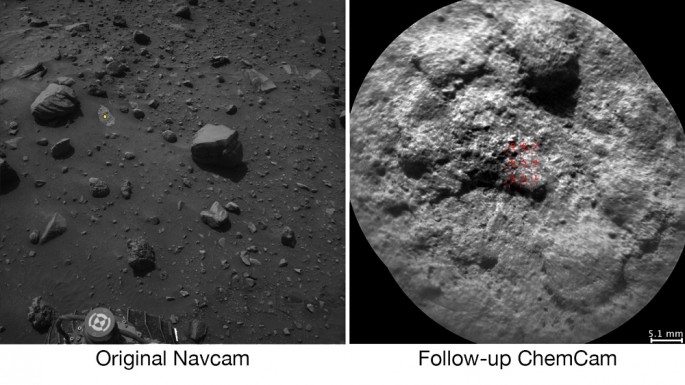In a new breakthrough, NASA's Curiosity rover can now choose its own target rock specimen on Mars, where it can shoot its own lasers, as an autonomous ability, without much help from mission ground control back on Earth.
NASA just announced that Curiosity has been choosing rock targets per week with the help of a laser and telescopic camera, which are crucial parts of the Chemistry and Camera (ChemCam) instrument. The targets for ChemCam are chosen by mission scientists based on imagery transmitted back by the rover, capturing different kinds of Martian rocks and soil.
This autonomous ability by the rover is carried out by its AEGIS software (Autonomous Exploration for Gathering Increased Science) for autonomous target selection. This type of software was also utilized by another Martian rover, the Opportunity rover, but not that frequent enough.
According to AEGIS development head engineer, Tara Estlin, this kind of autonomy is especially useful at times, when keeping the science team on the loop during difficult moments or challenging times, such as when the rover is in the middle of long drives or when schedules on Earth, on Mars and transmission between spacecraft are brought on about by delays due to distances.
When it comes to choosing a target, Curiosity's criteria is based on a special type of brightness and size that are dictated by mission scientists beforehand. To date, Curiosity rover already fired its laser for more than 350,000 times, targeting more than 10,000 specimens. With the help of the rover's independent abilities, scientists can now observe more varieties of rocks, more than ever.
Estlin adds, when it comes to choosing rock specimens, there can be challenges like small sizes and hitting these targets with accuracy using the laser, which can most of the time require the rover to stay in one place as mission scientists back on Earth can fine tune in establishing parameters.



























